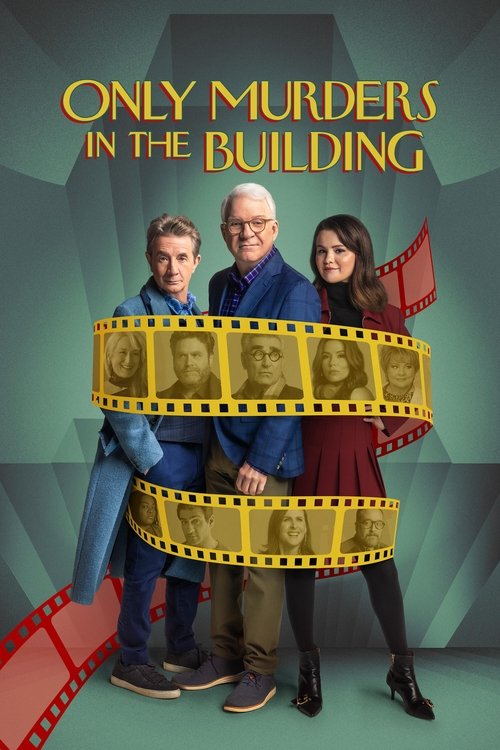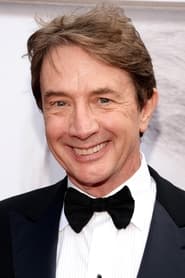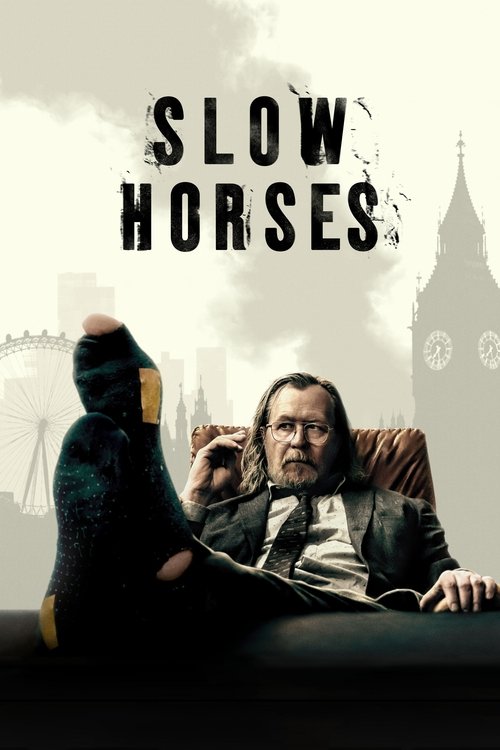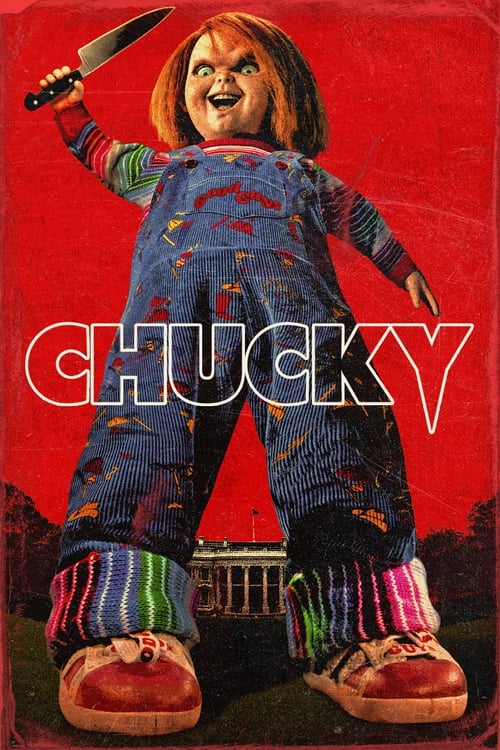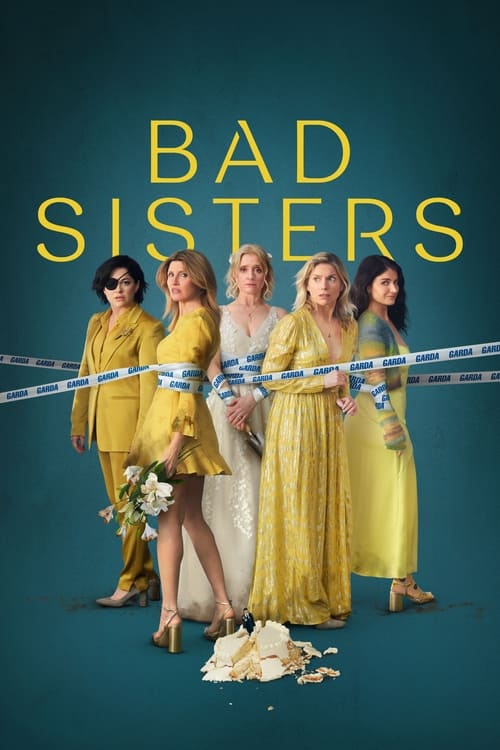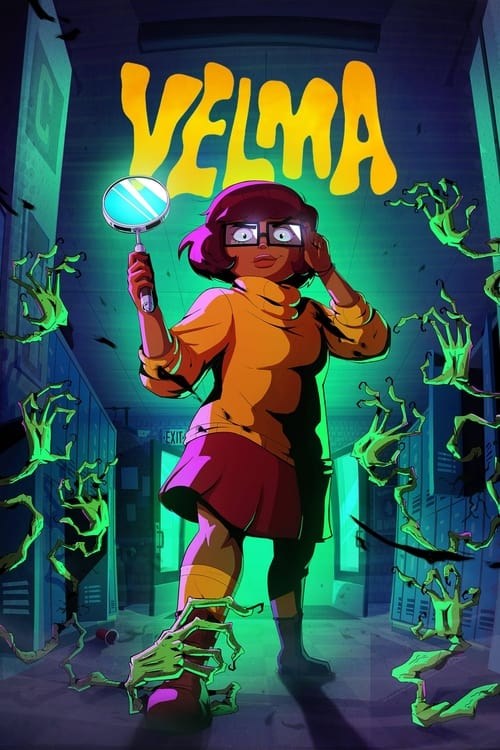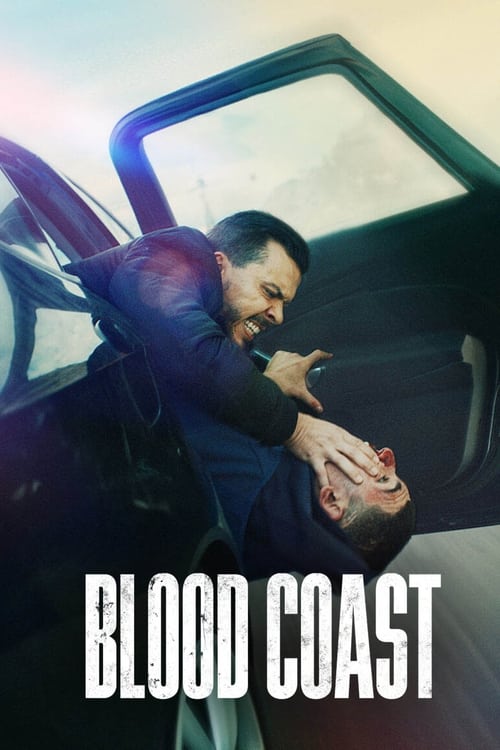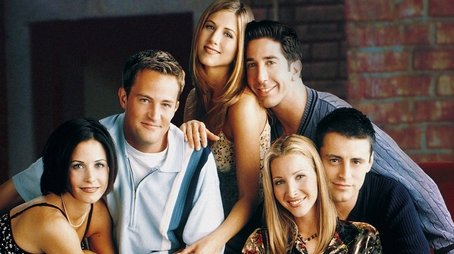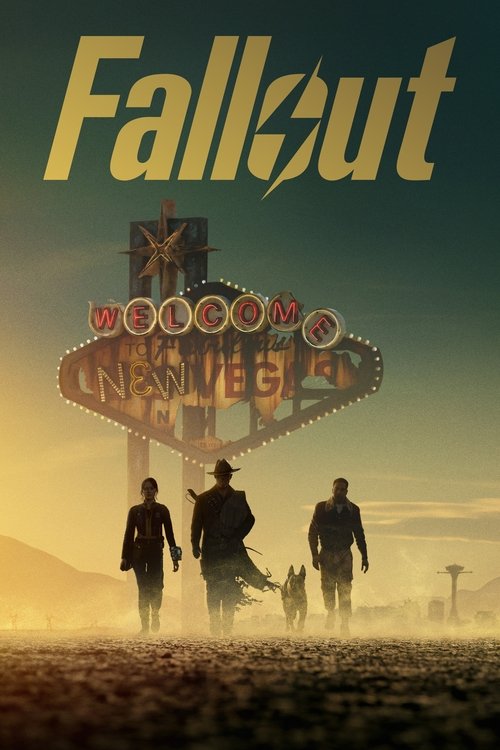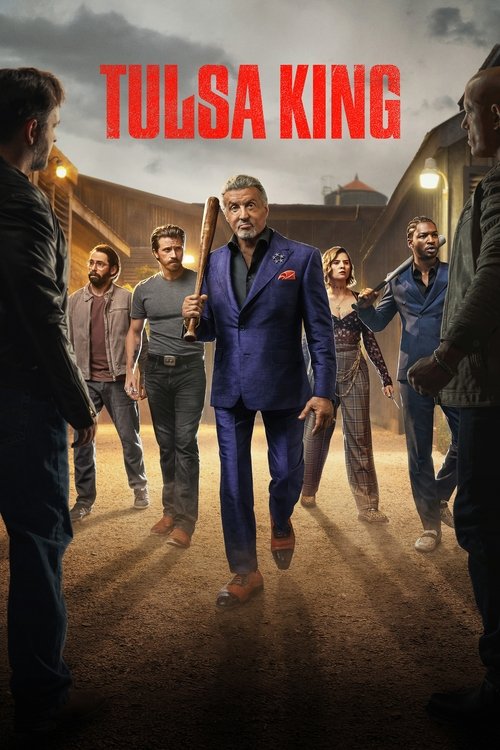
Ask Your Own Question
What is the plot?
The fourth season of "Only Murders in the Building" begins with Charles, Oliver, and Mabel unaware of a significant event that will soon unfold. The first episode focuses on setting the stage for the season, with the trio not learning about Sazz's murder until the very end. This delayed reveal builds tension and sets the stage for the mystery that will drive the season.
As the season progresses, Charles, Oliver, and Mabel become embroiled in the investigation of Sazz's murder. They suspect that the shot that killed Sazz came from one of the apartments on the west side of the Arconia. This leads them to investigate some of the residents, including Vince Fish, a friendly man wearing an eyepatch, and a Hispanic family consisting of Alfonzo, Inez, and Ana. The family invites them to a card game called "Oh hell" and shares information about an always locked apartment belonging to someone known only as "Dudenoff."
Mabel discovers that one of Sazz's notes contains the code numbers for the lockbox of the mysterious apartment. Using these codes, they break into the apartment and find a pig in the bathtub and a ham radio. Meanwhile, Charles is visited by Jan, who has escaped from prison. Jan informs Charles that Sazz was investigating something in the building recently and fears that another murderer might be targeting Charles. Jan escapes before the police arrive, and Charles reports Sazz's murder to the authorities.
As the investigation continues, the trio uses luminol to locate where Sazz's body fell. They find that she wrote "Tap in" on the floor with her blood, encouraging Charles to solve the murder. Oliver realizes that the code numbers from Sazz's note spell "Oh hell" when viewed upside down. This discovery is a pivotal moment in unraveling the mystery.
Throughout the season, the trio encounters various characters and plotlines, including the "Westie/Dudenoff" storyline, which, although entertaining, ultimately does not lead to significant revelations about the main mystery. The season also explores Charles's emotional journey as he grapples with Sazz's death and his own role in the investigation.
In one of the later episodes, Charles, Oliver, and Mabel infiltrate a film set to gather more information about why Sazz was killed. This episode highlights their resourcefulness and dedication to solving the mystery.
The season concludes with a dramatic cliffhanger, setting the stage for the next season. The finale artfully ties together the various plot threads, leaving viewers eager for the continuation of the story in Season 5.
What is the ending?
Short, Simple Narrative of the Ending
In the finale of Only Murders in the Building Season 4, Charles, Oliver, and Mabel finally uncover that Sazz Pataki's murder was orchestrated by Marshall Pope, a former stuntman protégé of Sazz's, driven by Hollywood ambition and personal betrayal. As they confront Marshall, the trio manages to expose his guilt, bringing closure to Sazz's case. However, just as they celebrate, they discover the body of Lester, the Arconia's beloved doorman, in the courtyard fountain--setting up the central mystery for Season 5.
Expanded, Chronological, Scene-by-Scene Narrative
The finale opens with Charles and Oliver, having just met with Ron Howard, realizing that Marshall Pope--the screenwriter working on the Only Murders in the Building movie--was once Sazz's stuntman protégé. They recall Sazz's cryptic warning about someone being "the death of her," and now, the pieces click into place. Anxious and urgent, they text Mabel their discovery, unaware that at that very moment, Mabel is in her apartment, helping Marshall with script rewrites--completely unaware of his true nature.
Mabel, focused on her work, is oblivious to the danger. Marshall, charming and collaborative, seems invested in the creative process. The tension is invisible to her, but the audience feels the dread as the camera lingers on Marshall's subtle shifts in demeanor--a tightening of the jaw, a too-long pause--hinting at the predator beneath the collaborator.
Meanwhile, Charles and Oliver rush through the Arconia's halls, their footsteps echoing, their faces etched with worry. They burst into Mabel's apartment, interrupting the writing session. The room is charged--Mabel confused, Marshall startled but quickly composing himself. Charles, voice trembling, accuses Marshall directly. Oliver, ever the showman, lays out their evidence: Marshall's history with Sazz, his motive rooted in professional jealousy and a desire to control the narrative of his own career, and the opportunity presented by the chaos of the movie production.
Marshall, cornered, drops the act. His face hardens; the friendly collaborator is gone. He confesses, not with remorse, but with a chilling pride, detailing how he manipulated events to frame others and secure his position in Hollywood. The room is silent except for his voice, the weight of his betrayal pressing down on all present. Mabel's shock is palpable--her trust violated, her sense of safety in her own home shattered.
The trio, though shaken, manages to record Marshall's confession. The scene shifts to the podcast studio, where they wrap up the season's investigation, their voices a mix of relief and exhaustion. The mood is bittersweet--justice is served, but the cost is high. Sazz's ghost, in Charles's imagination, offers a silent nod of approval, a closure of sorts for her friend.
As they leave the studio, the trio walks through the Arconia's courtyard, the familiar setting now a place of both resolution and new dread. The fountain, usually a centerpiece of calm, is tinged red. They approach, and the camera reveals Lester, the doorman, lifeless in the water. The shock is visceral--Charles and Oliver had just brushed him off earlier, too preoccupied with their own crises to listen to his stories. Now, his absence is a gaping wound in the building's daily life.
The final moments are a blur of panic and grief. The trio calls for help, but it's too late. Lester is gone, and the fountain--once a silent witness to his own wedding--now bears witness to his death. The season ends with the trio staring at the body, the horror of a new mystery dawning, the cycle beginning anew.
Fate of the Main Characters
- Charles: Though he solves Sazz's murder, he is haunted by the loss of his friend and the guilt of ignoring Lester in his final hours. He is physically unharmed but emotionally raw, his usual reserve cracked by grief and the relentless cycle of death in his home.
- Oliver: Relieved to have survived another season's chaos, he is nonetheless shaken by Lester's death, especially after his dismissive comment about the doorman "letting in murderers." His trademark bravado is muted, replaced by a somber recognition of the building's darkness.
- Mabel: Betrayed by Marshall, she is left questioning her judgment and her place in the Arconia. The discovery of Lester's body leaves her visibly shaken, her usual sharp wit replaced by a quiet, stunned sorrow.
- Lester: The kind, overlooked doorman meets a tragic end, his body discovered in the fountain--a cruel twist for a man who loved the building and its residents. His death becomes the catalyst for the next season's mystery.
- Marshall Pope: Exposed as Sazz's killer, he is taken into custody, his Hollywood ambitions ending in disgrace. His confession is cold and calculated, revealing a man willing to sacrifice others for his own gain.
Key Points the Story Highlights
The finale underscores the corrosive effects of ambition and betrayal, both in Hollywood and within the Arconia's walls. It contrasts the glittering facade of success with the personal costs paid by those caught in its wake. The characters' emotional journeys--Charles's guilt, Oliver's humility, Mabel's vulnerability--are laid bare, showing how each murder leaves scars beyond the physical. The sudden, shocking death of Lester serves as a reminder that no one in the Arconia is truly safe, and that the pursuit of truth is both necessary and never-ending. The cycle of mystery and loss continues, the building itself a silent witness to the lives and deaths within.
Is there a post-credit scene?
Yes, Only Murders in the Building Season 4 does have post-credit scenes, often containing Easter eggs or additional clues related to the ongoing mystery. These scenes typically appear during or after the end credits of episodes and include subtle references or visual hints that enrich the story or foreshadow future developments. For example, the season's end credits feature Easter eggs such as a ham in a window referencing a recurring joke about residents eating ham from a bathtub, or ghost footprints linked to the murder investigation.
While there is no detailed description of a single, specific post-credit scene for the entire season, the show consistently uses these moments to add layers to the narrative, including visual motifs and small narrative beats that fans can analyze. These scenes are not standalone story conclusions but rather thematic or mystery-related enhancements.
If you are asking about a particular episode's post-credit scene, such as Episode 4, there is no explicit mention of a distinct post-credit scene in the available information, but the episode itself ends with significant plot developments and theories discussed in fan breakdowns.
In summary, Season 4 includes post-credit Easter eggs and subtle scenes that contribute to the mystery and atmosphere but does not have a single, prominent post-credit scene that concludes or dramatically extends the episode's story.
Who killed Sazz Pataki in Only Murders in the Building Season 4?
Sazz Pataki is murdered early in Season 4, and the mystery of her killer drives much of the plot. The trio discovers clues pointing to a shooter from one of the west side apartments of the Arconia, and they investigate residents including Vince Fish and a family who play the card game 'Oh hell.' The investigation reveals complex motives and suspects, with the killer's identity being a central suspense element throughout the season.
What is the significance of the 'Oh hell' card game in Season 4?
The 'Oh hell' card game is a key plot element in Season 4. Sazz leaves a blood-written message 'Tap in' and a code that spells 'Oh hell' upside down, which leads the trio to investigate the west side Arconia residents who play this game. This clue helps them uncover secrets about the locked apartment belonging to 'Dudenoff' and advances the murder investigation.
How does Charles Haden Savage cope with Sazz's murder in Season 4?
Charles is deeply affected by Sazz's murder, mourning her loss throughout the season. He receives a visit from Jan Bellows, who warns him that another murderer might be targeting him. Charles also discovers troubling clues in Sazz's LA apartment and reports her murder to the police. His emotional journey and reckoning with Sazz's death are central to his character arc in Season 4.
What role does Jan Bellows play in Season 4?
Jan Bellows, who has broken out of prison, visits Charles to warn him that Sazz was investigating a potential new threat to Charles's life. Jan escapes before the police arrive, adding tension and complexity to the investigation. Her involvement connects to the broader mystery and raises stakes for the main characters.
What is the mystery behind the locked apartment and the character 'Dudenoff'?
The locked apartment on the west side of the Arconia, associated with the name 'Dudenoff,' is a significant mystery in Season 4. The trio breaks into the apartment using a code found in Sazz's notes and discovers unusual items like a pig in the bathtub and a ham radio. This subplot, involving the 'Westies,' adds a layer of intrigue and humor but ultimately leads to dead ends, overshadowing the core murder investigation.
Is this family friendly?
Only Murders in the Building, Season 4 (2024), continues the show's signature blend of comedic mystery and eccentric character dynamics, but it is not strictly "family friendly" for all ages, especially younger children or sensitive viewers. Here's a detailed, spoiler-free breakdown of potentially objectionable or upsetting aspects, organized by narrative elements and emotional impact:
Potentially Objectionable or Upsetting Content
Violence and Gore - The season opens with a shocking murder that is central to the plot. While the violence is not gratuitously graphic, the aftermath--including the discovery of the victim, blood evidence, and the emotional fallout for the main characters--is depicted with a mix of dark humor and genuine pathos. Characters process grief, fear, and trauma, which may be intense for sensitive viewers. - There are scenes involving forensic investigation (e.g., luminol to detect blood), discussions of murder methods, and tense confrontations that heighten suspense. The tone balances comedy with moments of genuine unease, especially in the finale, which is described as "very intense" in the series' parental guidance. - Some episodes experiment with visual styles, such as "found footage," which can create a disquieting, voyeuristic atmosphere, though not explicitly gory.
Language - Profanity is present throughout the season, including the use of strong language (e.g., F-bombs), which may not be suitable for younger audiences. - The dialogue maintains the series' witty, sometimes irreverent tone, with sarcasm, innuendo, and adult humor that may go over the heads of children but could be off-putting to some families.
Themes and Emotional Content - The season deals heavily with themes of loss, betrayal, and paranoia. Characters grapple with the fear that they or their loved ones may be targeted, leading to anxiety and emotional vulnerability. - There are scenes where characters confront their mortality, revisit past traumas, and navigate complex interpersonal relationships, including moments of tension, mistrust, and emotional manipulation. - The show's self-aware humor often undercuts the darker moments, but the underlying stakes--life and death--remain serious.
Other Considerations - The series occasionally includes scenes of mild peril, such as breaking and entering, sneaking around suspicious locations, and encounters with eccentric or potentially dangerous strangers. - While sexual content is generally mild, there may be suggestive dialogue or situations typical of adult-oriented comedy. - The show's pacing is brisk, with frequent twists and cliffhangers that can be thrilling but also anxiety-inducing for sensitive viewers.
Summary Table
| Aspect | Description | Potential Impact | |-----------------------|-----------------------------------------------------------------------------|-------------------------------------------| | Violence/Gore | Murder, blood, forensic investigation, tense confrontations | Moderate; intense in finales | | Language | Strong profanity, adult humor, sarcasm | Severe; not for young children | | Themes | Loss, betrayal, paranoia, mortality, emotional trauma | Emotionally complex; may upset sensitive viewers | | Peril/Suspense | Breaking and entering, sneaking, encounters with strangers | Mild to moderate tension | | Sexual Content | Mild innuendo, suggestive dialogue | Minimal, but present | | Pacing/Tone | Fast-paced, darkly comedic, frequent twists | Can be thrilling or anxiety-inducing|
Conclusion
Only Murders in the Building, Season 4, is best suited for mature teens and adults due to its murder-mystery premise, strong language, and emotionally complex themes. While the show's humor and eccentric charm often lighten the mood, the underlying violence, suspense, and adult content make it inappropriate for young children or particularly sensitive viewers. Parents should preview episodes to assess suitability for their family.

